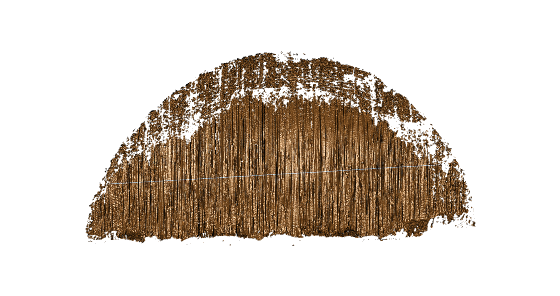Motivation: Forensic Tool Mark Examination
During a forensic investigation, investigators may look at microscopic imperfections in a surface left by the use of a tool (e.g. crowbar, bolt cutters, etc.). These marks often take the form of striations - little lines that are on the surface of the mark. A common macroscopic example of striations are the lines left behind when you spread butter or jam on toast.

Tools can leave different striations depending on where and how the material contacts the tool. As a result, in order to compare a mark to a tool, a forensic examiner must make comparisons along the entire surface of the tool’s edge. In an investigation, examiners would have to assess all of the tools in someone’s possession in order to link them to evidence at the crime scene.
This study aims to understand exactly how many comparison surfaces individuals might have at home. Understanding this will help statisticians assess the probability that an individual might be falsely convicted of a crime.
If you choose to participate and provide informed consent (next page), this study will ask you to locate and measure your tools.
Time Commitment The amount of time it takes to complete this survey will heavily depend on the size of your tool collection. We estimate that it will take an individual with tools to support light automotive repair or home improvement work between 20 and 40 minutes to complete this study.
Other Information At the end of the survey, we will also ask you for some demographic information. At no time will we store any information which can be used to identify you.